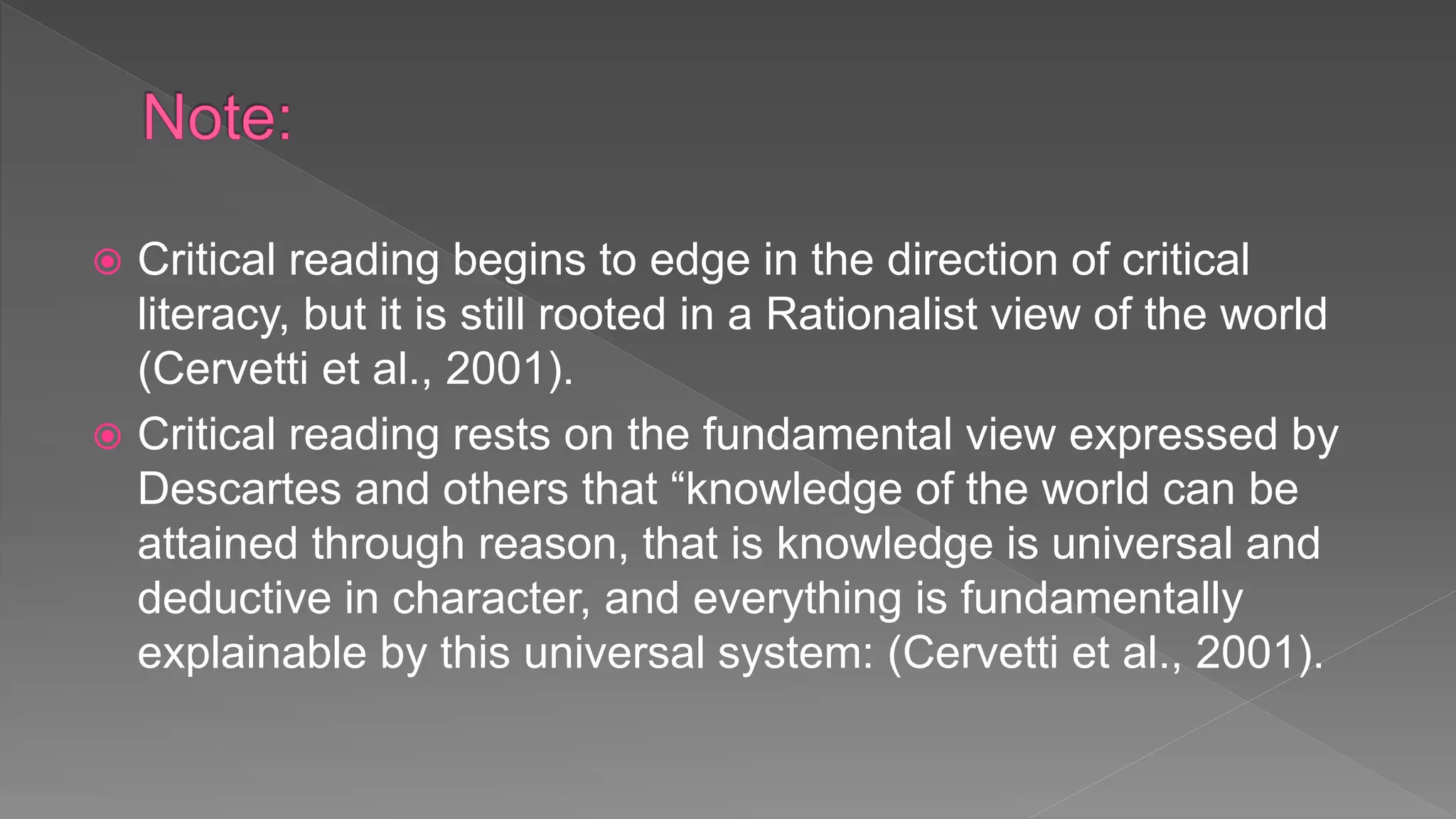The document discusses critical literacy and its development and applications in education. It provides definitions of critical literacy from various scholars and outlines some of its key principles, including critiquing relationships between language, power and social practices. It also discusses how critical literacy has evolved since the 1970s and been taken up in different educational contexts. Several classroom applications of critical literacy are described, such as using questioning techniques and choosing empowering texts for students.












































